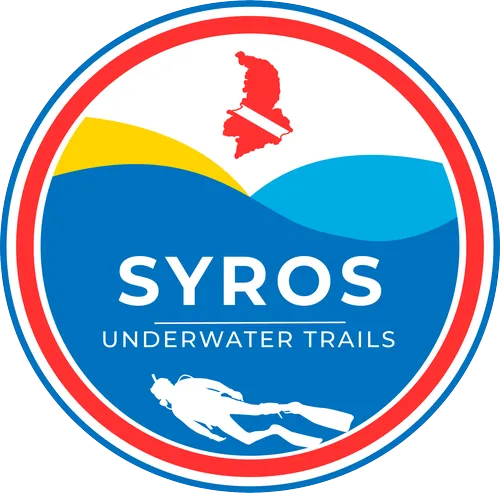Learn about the most common marine life species of Syros.
Common Fish
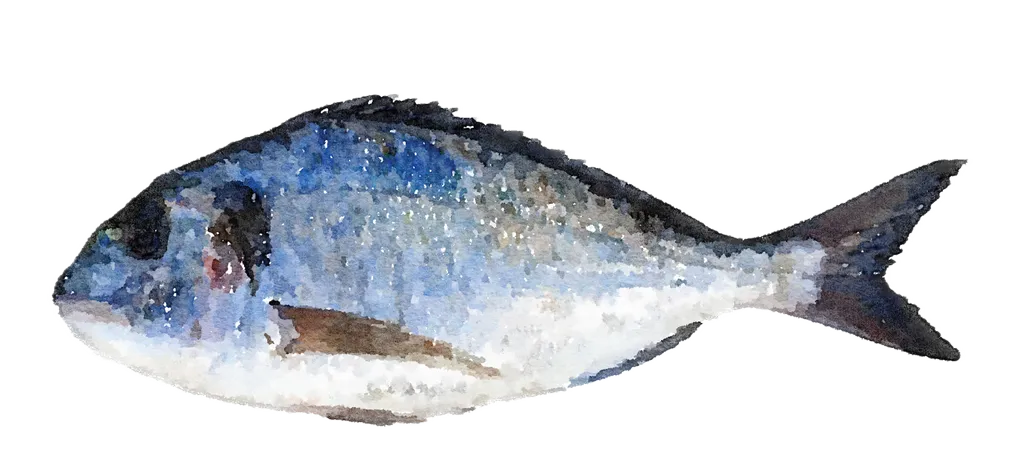
Sparus aurata
Gilthead Seabream
The Sparus aurata, commonly known as gilthead seabream, is a species of fish belonging to the family Sparidae. Renowned for its distinctive golden-yellow markings on the head, the gilthead sea bream is a coastal marine fish found in the Mediterranean and Eastern Atlantic regions. It is characterized by a sleek, oval-shaped body and possesses a set of sharp teeth adapted for feeding on crustaceans and small fish. Its usual size is 35cm but can reach up to 70cm.

Scomber scombrus
Atlantic mackerel
Scomber scombrus, commonly referred to as the Atlantic mackerel, is a pelagic fish species found in the North Atlantic Ocean and mediterranean. Recognized for its streamlined, torpedo-shaped body, this migratory fish exhibits iridescent blue-green scales on its back and silver-white undersides. Atlantic mackerel is a relatively small species, with individuals typically measuring around 30 to 40 centimeters in length, although some can grow larger. Known for its swift and agile swimming capabilities, the Atlantic mackerel forms large schools, contributing to its social and migratory behavior.

Sphyraena sphyraena
European Barracuda
The European Barracuda, scientifically known as Sphyraena sphyraena, is a predatory fish found in coastal waters of the Eastern Atlantic Ocean and the Mediterranean Sea. This species is characterised by its streamlined and elongated body, equipped with sharp teeth. Typically ranging in size from about 30 cm to 60 cm, although some individuals can grow larger, the European Barracuda is known for its swift swimming capabilities and formidable hunting prowess. It is often found in nearshore environments, including rocky reefs and seagrass beds, where it preys on smaller fish.
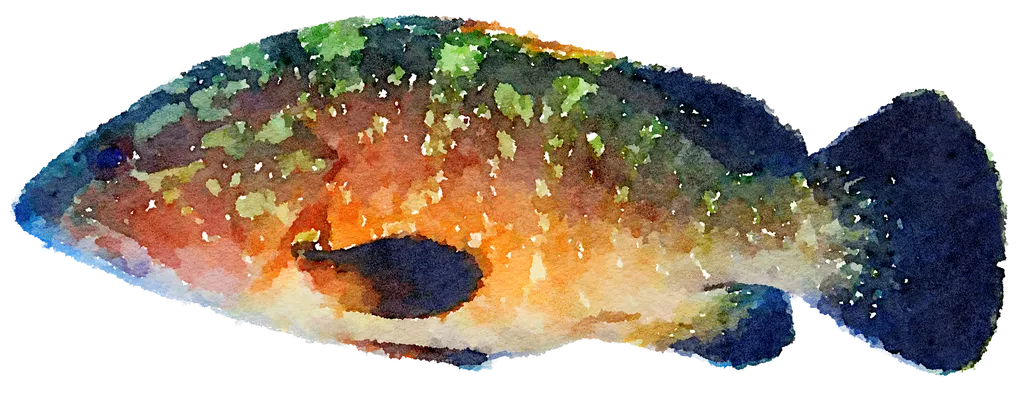
Epinephelus marginatus
Dusky Grouper
Epinephelus marginatus, commonly known as the dusky grouper, is a species of fish found in the Mediterranean Sea and parts of the Eastern Atlantic Ocean. This marine species is notable for its robust body and distinctive coloration, characterized by a mottled pattern that provides effective camouflage among rocky environments. The dusky grouper is a relatively large species, with adults commonly reaching lengths of 70 to 100 centimeters and occasionally growing even larger. Known for its solitary nature, the dusky grouper is often found in rocky habitats, caves, and crevices, where it can ambush prey such as smaller fish and crustaceans.

Boops boops
Bogue
Boops boops, commonly known as the bogue, is a small fish species inhabiting the coastal waters of the Mediterranean Sea and the eastern Atlantic Ocean. This slender and streamlined fish is recognized for its silvery appearance and distinctive forked tail. Typically measuring between 15 to 20 centimeters in length, the bogue is a relatively small species. Its body is characterized by a compressed shape and a mouth positioned upward, indicating its feeding behavior near the water’s surface. Boops boops is known to form schools and is often found in shallow coastal areas, where it feeds on plankton and small marine organisms.
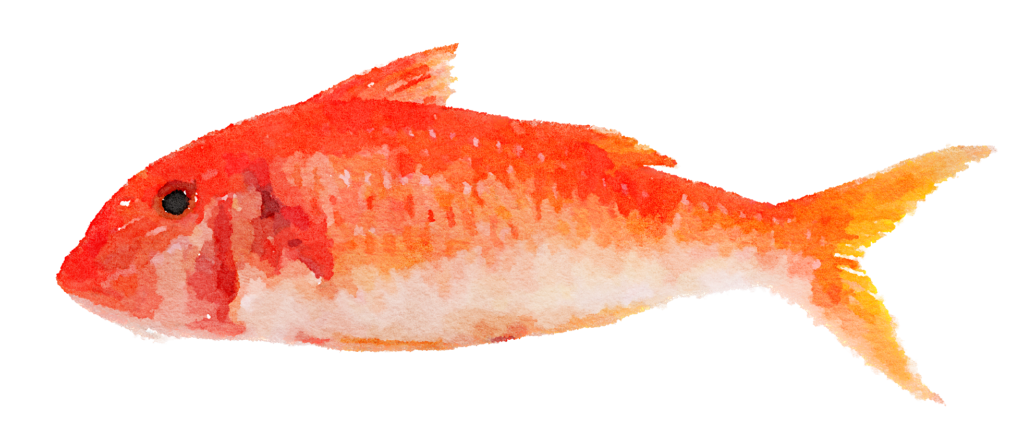
Mullus surmeletus
Striped red mullet
Mullus surmuletus, commonly known as the striped red mullet, is a fish species inhabiting the coastal waters of the Mediterranean Sea and the eastern Atlantic Ocean. This small to moderately sized fish is characterized by its elongated body and distinctive coloration, featuring reddish-pink hues with prominent longitudinal stripes. Typically reaching lengths of about 20 to 25 centimeters, although some individuals can grow larger, the striped red mullet is known for its slender form and unique facial features, including a pair of barbels beneath its mouth. It prefers sandy or muddy substrates along the seabed and is often found in shallow coastal zones.
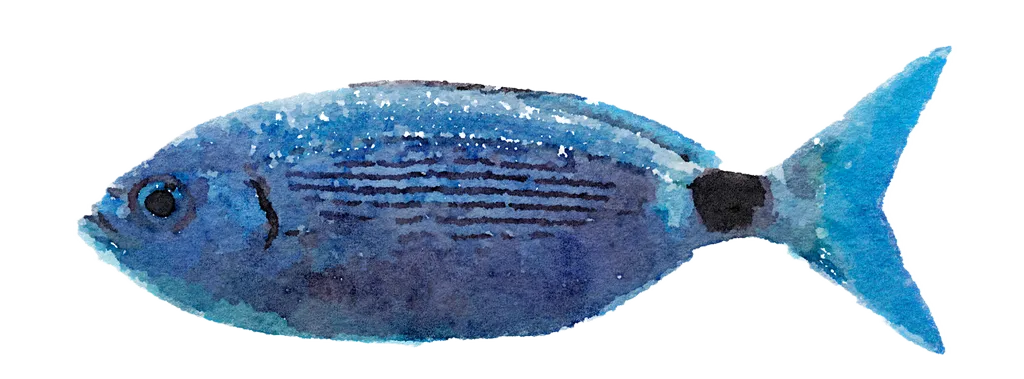
Oblada melanura
Saddled seabream
Oblada melanura, commonly known as the saddled seabream, is a coastal fish species found in the Mediterranean Sea and the eastern Atlantic Ocean. Recognizable for its oval-shaped body and distinctive black spot at the base of its pectoral fin, the saddled seabream typically reaches sizes of about 5 to 20 centimeters in length, though larger individuals are not uncommon. This species exhibits silvery scales, and its body is marked by a noticeable dark saddle-like pattern across its back, contributing to its common name. Oblada melanura is often found in shallow coastal waters, where it feeds on small crustaceans and other invertebrates. The species is known for its schooling behavior, forming groups that navigate near the water’s surface.
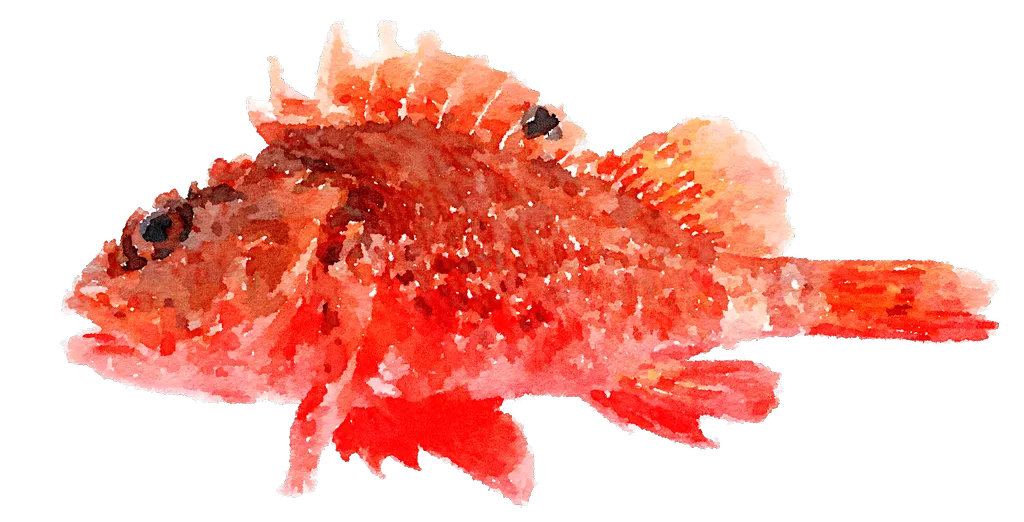
Scorpaena notata
Small rockfish
Scorpaena notata, commonly known as the small rockfish, is a species inhabiting the Mediterranean Sea and the eastern Atlantic Ocean. Recognizable for its venomous spines and intricate camouflage, this bottom-dwelling fish typically reaches sizes of around 25 to 30 centimeters in length. With a compressed body and a textured appearance that aids in blending with its surroundings, the red scorpionfish is often found in rocky or sandy seabed habitats. Its coloration varies, but it generally includes shades of red, brown, and yellow, providing effective concealment. The venomous spines serve as a defense mechanism against predators and are a distinctive feature of this species. As a sedentary predator, the red scorpionfish relies on its ambush strategy to capture smaller fish.
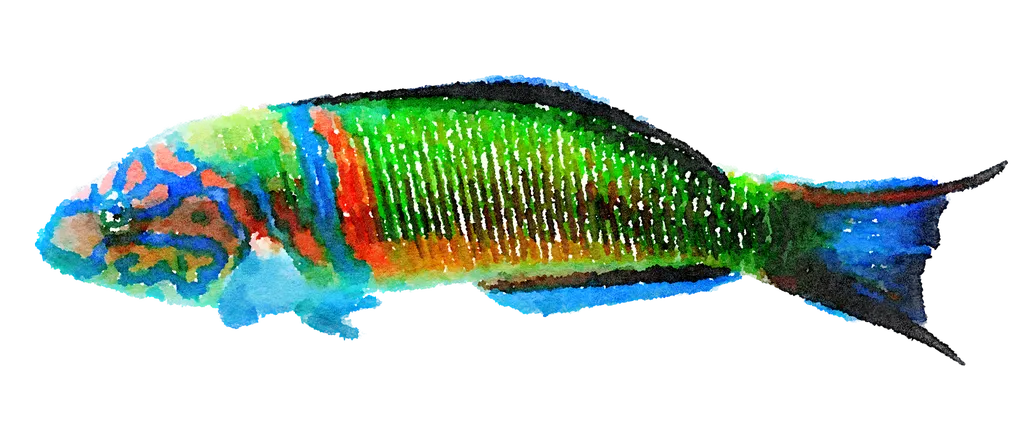
Thalassoma pavo
Ornate wrasse
Mullus surmuletus, commonly known as the striped red mullet, is a fish species inhabiting the coastal waters of the Mediterranean Sea and the eastern Atlantic Ocean. This small to moderately sized fish is characterized by its elongated body and distinctive coloration, featuring reddish-pink hues with prominent longitudinal stripes. Typically reaching lengths of about 20 to 25 centimeters, although some individuals can grow larger, the striped red mullet is known for its slender form and unique facial features, including a pair of barbels beneath its mouth. It prefers sandy or muddy substrates along the seabed and is often found in shallow coastal zones.
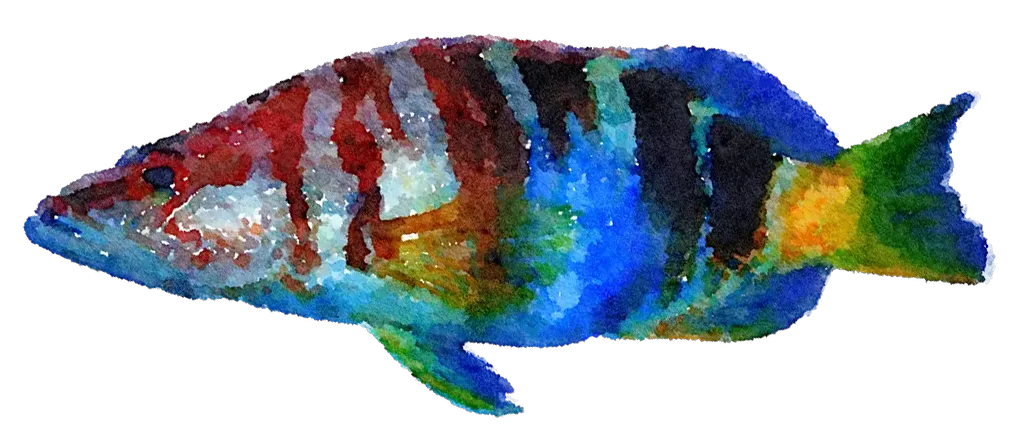
Serranus scriba
Painted comber
Serranus scriba, commonly known as the painted comber, is a coastal fish species inhabiting the Mediterranean Sea and the eastern Atlantic Ocean. Recognizable for its elongated body and distinctive coloration, the comber typically reaches sizes of around 20 to 30 centimeters in length. Its body exhibits a combination of vibrant colors, including shades of pink, red, and orange, with intricate markings and patterns. This species is often found in rocky or reef environments, where it navigates and forages for small fish and invertebrates.
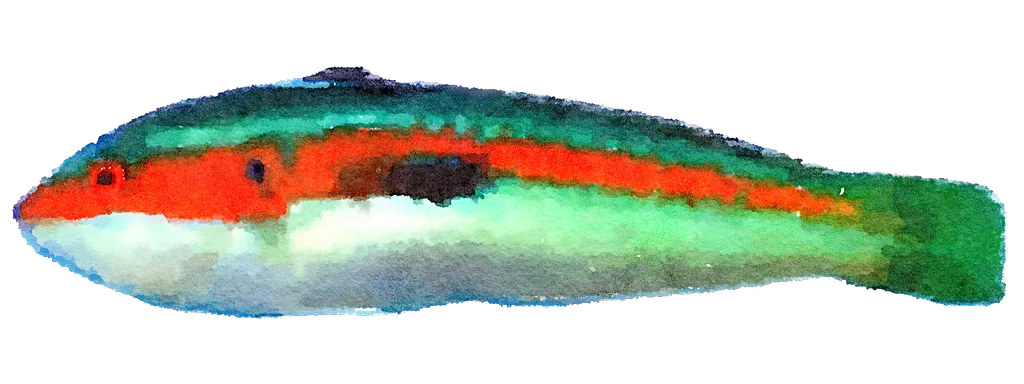
Coris julis
Mediterranean rainbow wrasse
Mullus surmuletus, commonly known as the striped red mullet, is a fish species inhabiting the coastal waters of the Mediterranean Sea and the eastern Atlantic Ocean. This small to moderately sized fish is characterized by its elongated body and distinctive coloration, featuring reddish-pink hues with prominent longitudinal stripes. Typically reaching lengths of about 20 to 25 centimeters, although some individuals can grow larger, the striped red mullet is known for its slender form and unique facial features, including a pair of barbels beneath its mouth. It prefers sandy or muddy substrates along the seabed and is often found in shallow coastal zones.
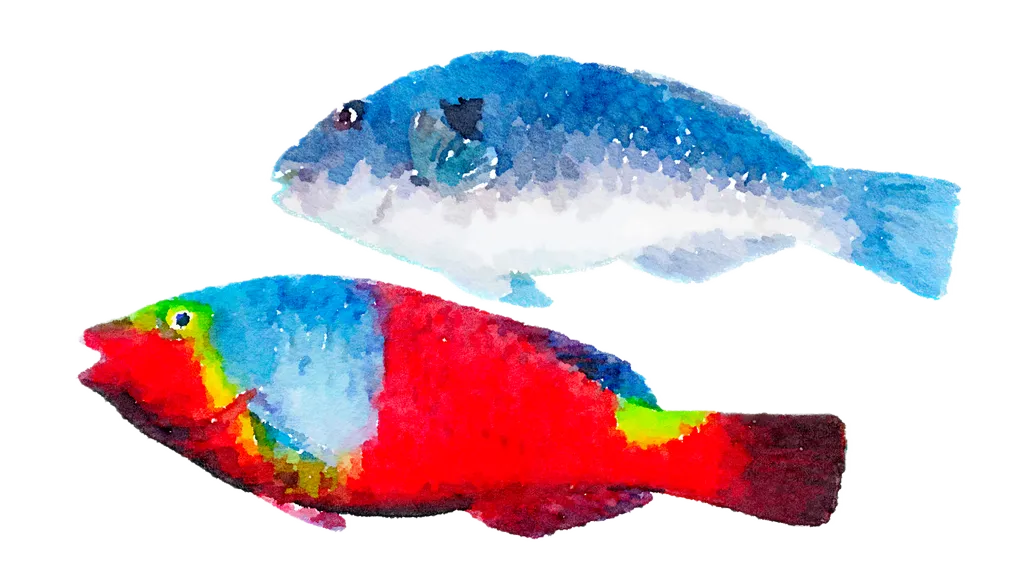
Mediterranean parrotfish
Sparisoma cretense
The Sparisoma cretense, commonly known as the Mediterranean parrotfish, is a fascinating marine species inhabiting the coastal waters of the Mediterranean Sea. Recognizable for its vibrant and varied coloration, this parrotfish exhibits shades of green, blue, and orange, contributing to its striking appearance. Typically reaching sizes of 20 to 30 centimeters, the Sparisoma cretense showcases a compact and robust body with a distinct beak-like mouth, characteristic of parrotfish. This species is often found in rocky and coral-rich environments.
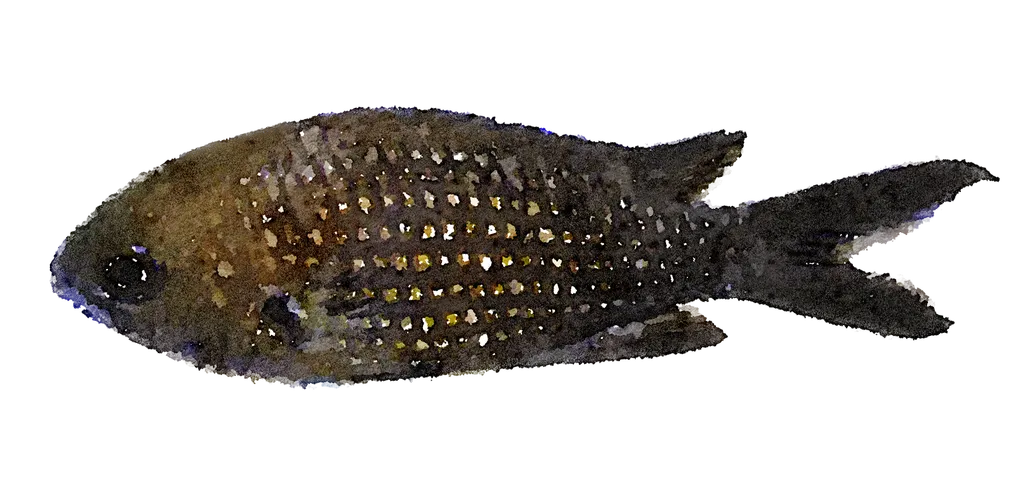
Chromis chromis
Damselfish
The Chromis chromis, commonly known as the damselfish, is a small and vibrant marine species inhabiting the coastal waters of the Mediterranean Sea. Displaying a dazzling array of electric blue and yellow colors, this fish is recognized for its striking appearance. Typically measuring between 8 to 12 centimeters in length, the Chromis chromis has a slender and streamlined body with a forked tail. These fish are often found in rocky and coral-rich environments, where they form schools and dart among the crevices.
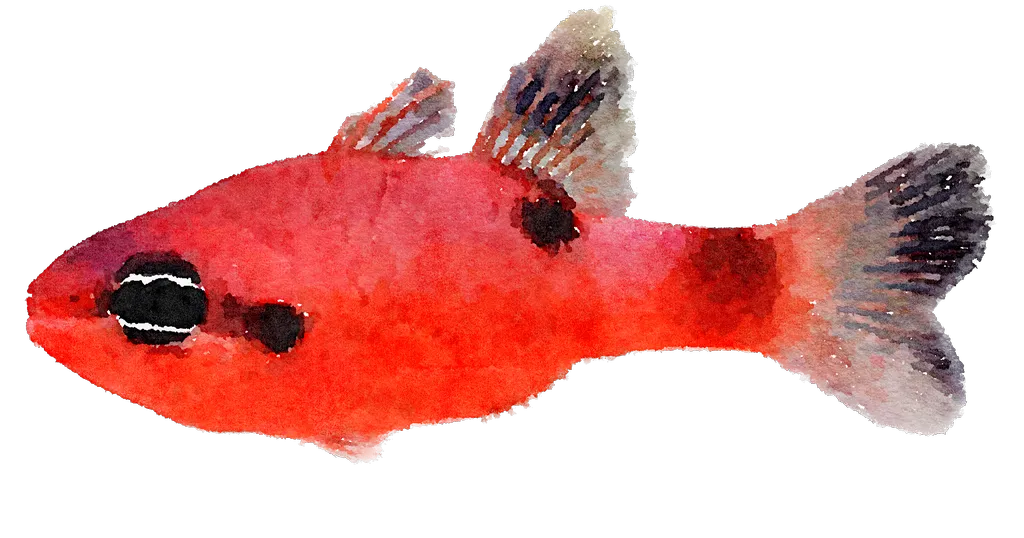
Apogon imberbis
Cardinal fish
The Apogon imberbis, commonly known as the cardinalfish, is a captivating marine species prevalent in the coastal waters of the Mediterranean Sea. Noted for its elegant and slender profile, this fish typically reaches a size of 10 to 15 centimeters in length. The Apogon imberbis exhibits a distinct silver or pinkish body with a series of vertical stripes, contributing to its visually appealing appearance. Known for its nocturnal habits, this species is often found sheltering in rocky crevices or seagrass beds during the day and becomes more active during the twilight hours.
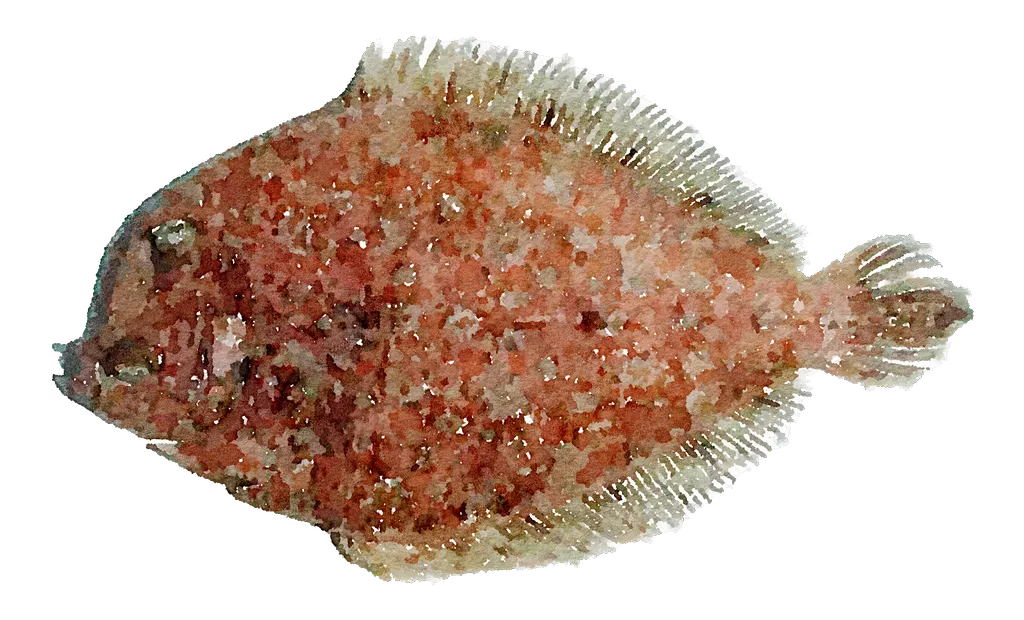
Bothus podas podas
Wide-eyed flounder
The Bothus podas podas, commonly known as the wide-eyed flounder, is a distinctive flatfish species found in the coastal waters of the Mediterranean Sea. Characterized by its flattened body and both eyes positioned on one side, this sole reaches an average size of 20 to 30 centimeters. Its coloring is typically a sandy or mottled pattern, providing effective camouflage against the seabed. The Bothus podas podas is a master of mimicry, blending seamlessly with its surroundings to avoid detection by predators and prey alike. These bottom-dwelling fish are often encountered on sandy or muddy substrates, where they use their pectoral fins to “walk” along the sea floor.
Other
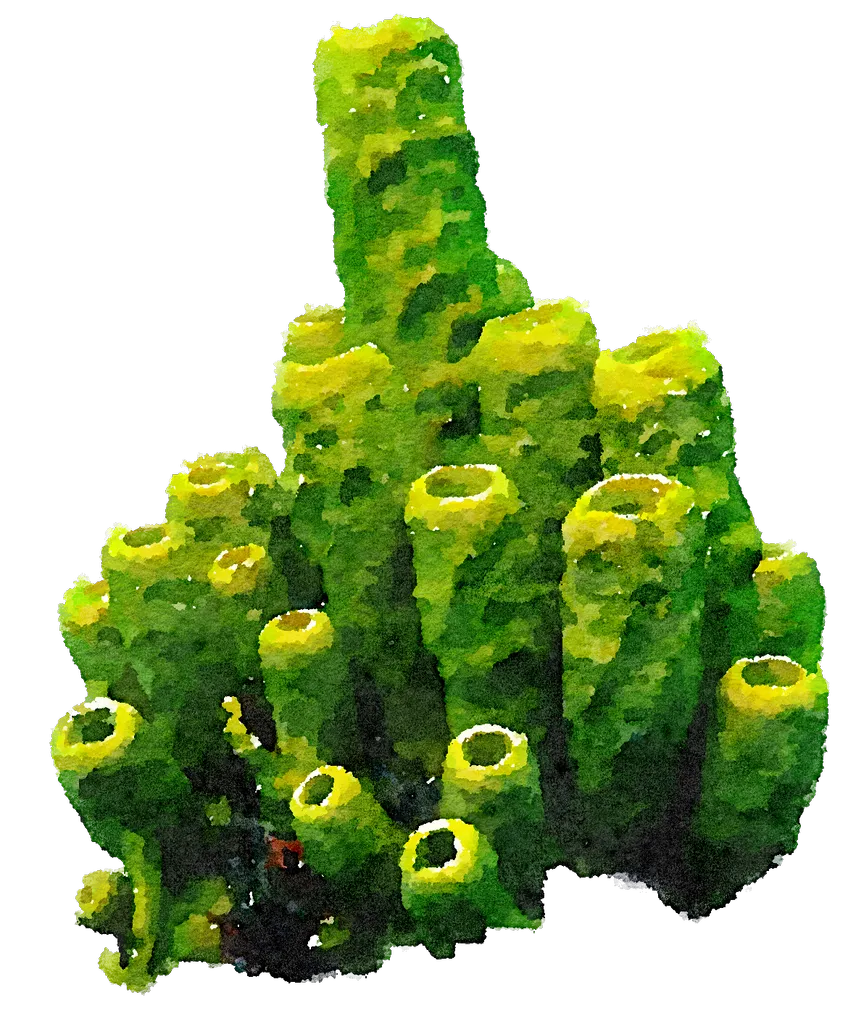
Aplysina aerophoba
Yellow tube sponge
Aplysina aerophoba, commonly known as the yellow tube sponge, is a marine invertebrate inhabiting the Mediterranean Sea. This sponge species is recognized for its vibrant yellow coloration and is typically found in rocky substrates. Aplysina aerophoba can grow to varying sizes, ranging from a few centimeters to over 20 centimeters in height. Its distinctive tubular or branching structure adds to its visual appeal. As a filter feeder, this sponge plays a crucial role in marine ecosystems, filtering water to extract nutrients.
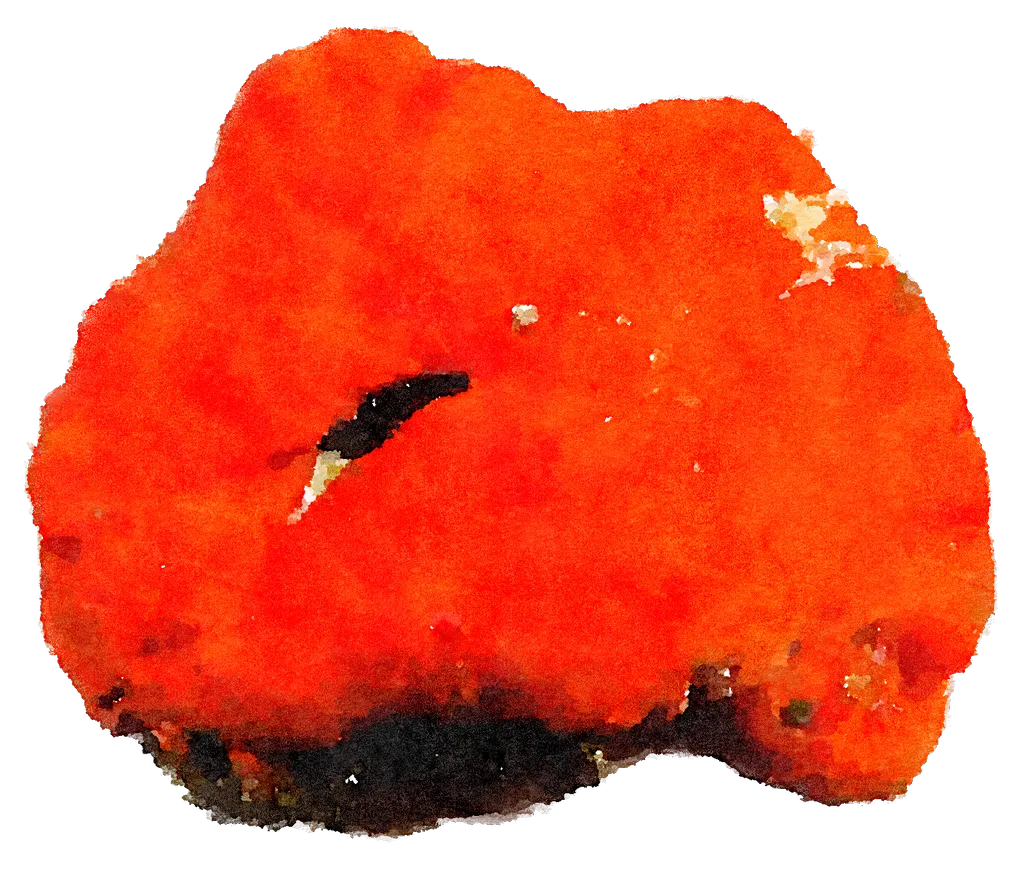
Spirastrella cunctatrix
Encrusting orange sponge
The Spirastrella cunctatrix is a species of sponge, commonly known as the εncrusting orange sponge. This marine invertebrate is recognized for its intricate, fan-shaped structure and is typically found in the coastal waters of the Mediterranean Sea. The size of Spirastrella cunctatrix can vary, with individuals often reaching lengths of 10 to 30 centimeters, with a color range that can include shades of red or orange. As a filter-feeding organism, this sponge contributes to maintaining water quality by extracting nutrients.
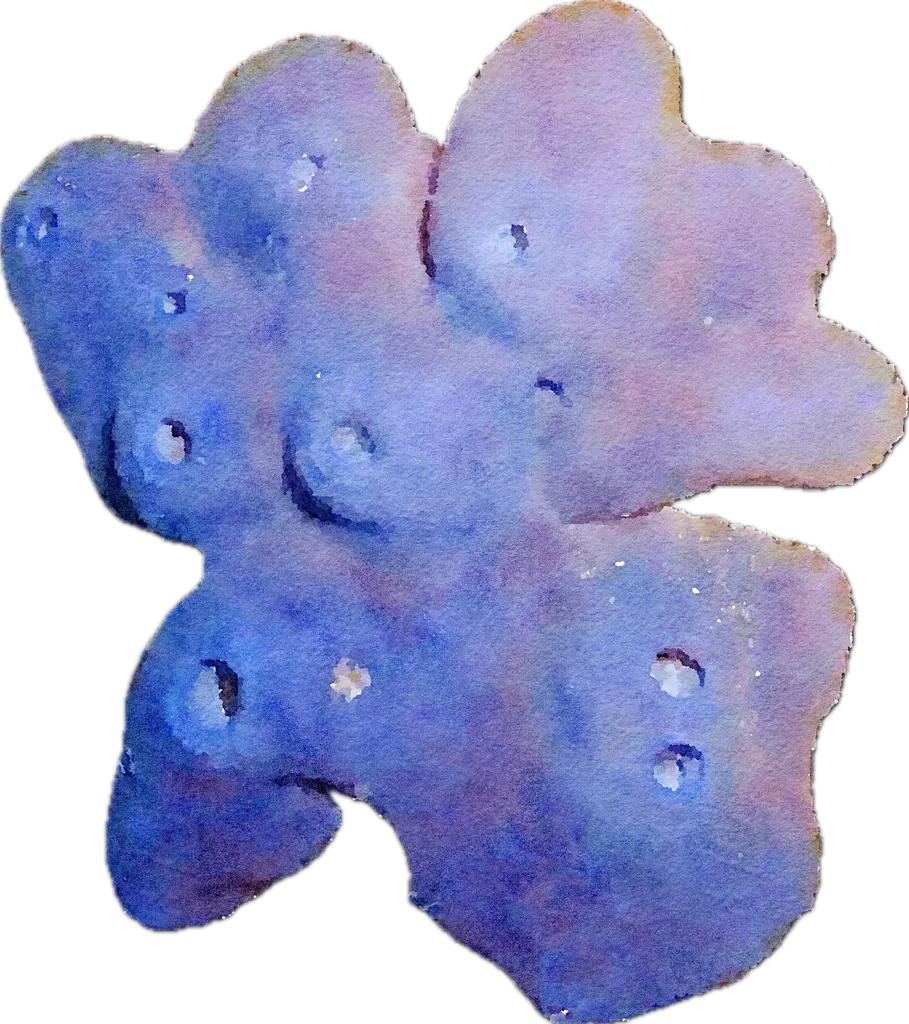
Spongia officinalis
Bath sponge
Spongia officinalis grow in large lobes with small openings and are formed by a mesh of primary and secondary fibers. Light grey to black colour and found throughout the Mediterranean Sea up to 100 meters deep on rocky surfaces. Grows on littoral rocky surfaces, sandy bottoms, and vertical walls in well-oxygenated water. Harvested commercially to use as a bath sponge and painting. Over-harvesting and diseases have led to a decrease in population in recent years.
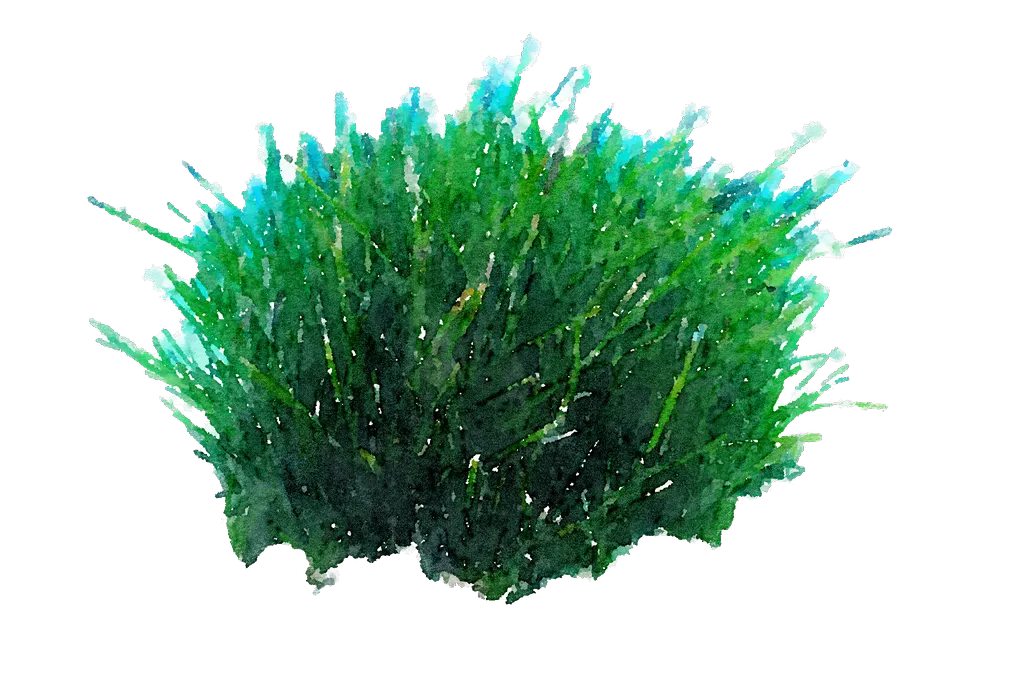
Mediterranean tapeweed
Posidonia oceanica
Posidonia oceanica, commonly known as Mediterranean tapeweed, is a vital marine plant species found in the coastal waters of the Mediterranean Sea. This seagrass species forms extensive underwater meadows, providing critical habitats for various marine organisms. The blades of Posidonia oceanica can reach lengths of up to one meter, creating a dense and lush underwater landscape. The plant’s leaves are long and ribbon-like, typically ranging from 1 to 2 centimeters in width. Posidonia oceanica plays a crucial role in coastal ecosystems by stabilizing sediments, producing oxygen, and providing shelter for a variety of marine life. Its presence is indicative of a healthy marine environment and emphasizes the significance of seagrass meadows in supporting biodiversity and maintaining the ecological balance of coastal ecosystems.
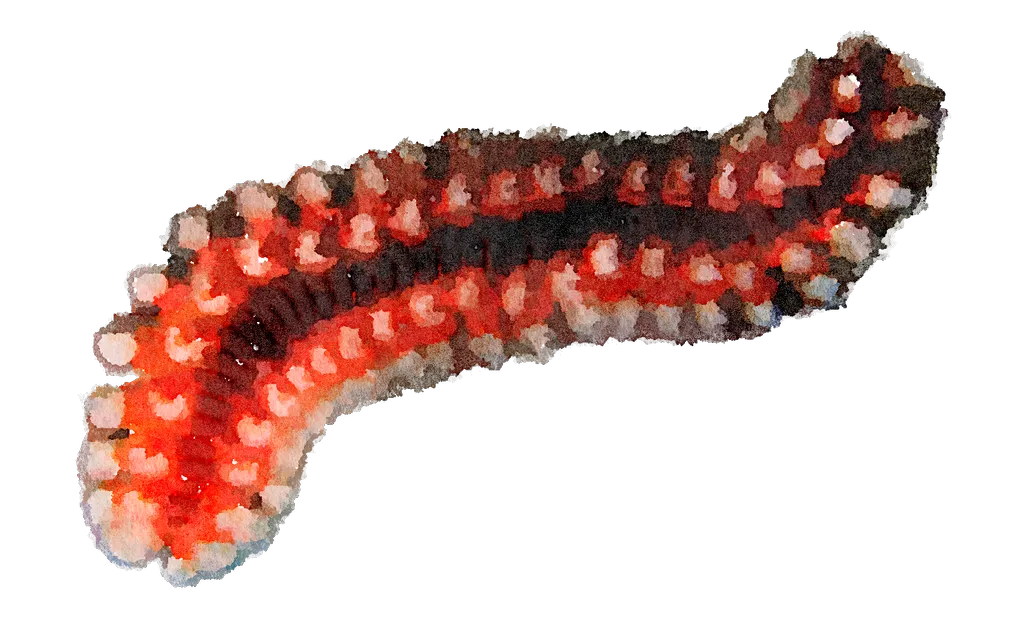
Hermodice carunculata
Bearded fire worm
Hermodice carunculata, commonly known as the bearded fireworm, is a marine bristleworm found in tropical and subtropical waters, including the Mediterranean Sea. This striking species is recognized for its vibrant colors and distinctive appearance. The bearded fireworm typically reaches sizes ranging from 15 to 30 centimeters in length. Its elongated and flattened body is adorned with bristle-like appendages, and the worm can exhibit hues of red, orange, or pink. Despite its appealing appearance, the bearded fireworm possesses stinging bristles that can cause irritation, emphasizing the importance of careful observation when encountering this marine organism.
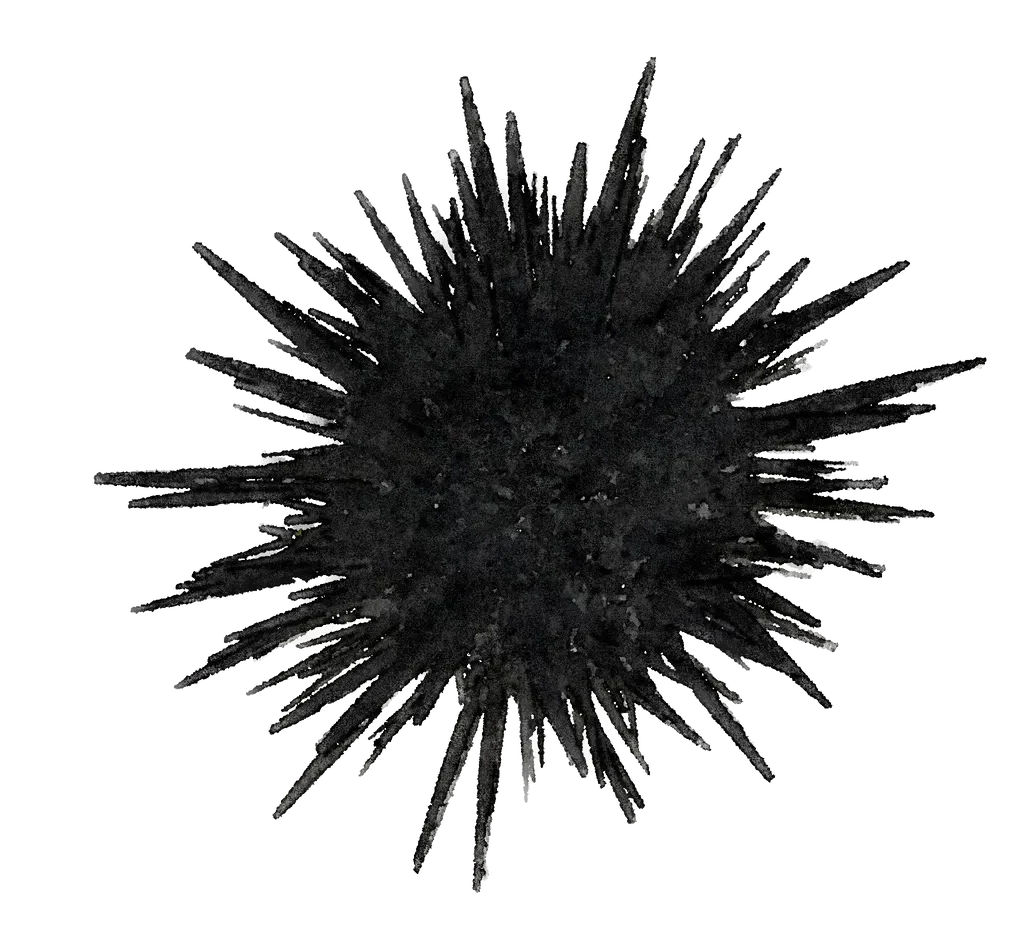
Arbacia lixula
Black sea urchin
Arbacia lixula, commonly known as the black sea urchin, is a species of sea urchin found in the coastal waters of the Mediterranean Sea. Recognized for its robust and spiny spherical body, the Arbacia lixula typically reaches sizes ranging from 5 to 8 centimeters in diameter. The urchin’s exoskeleton, or test, is dark purple to black in color, and it is adorned with numerous movable spines. These spines serve both as a protective mechanism and as a means of locomotion for the sea urchin. Arbacia lixula is commonly found in rocky or sandy substrates, where it plays a crucial role in marine ecosystems by contributing to nutrient cycling and serving as a habitat for various small organisms.
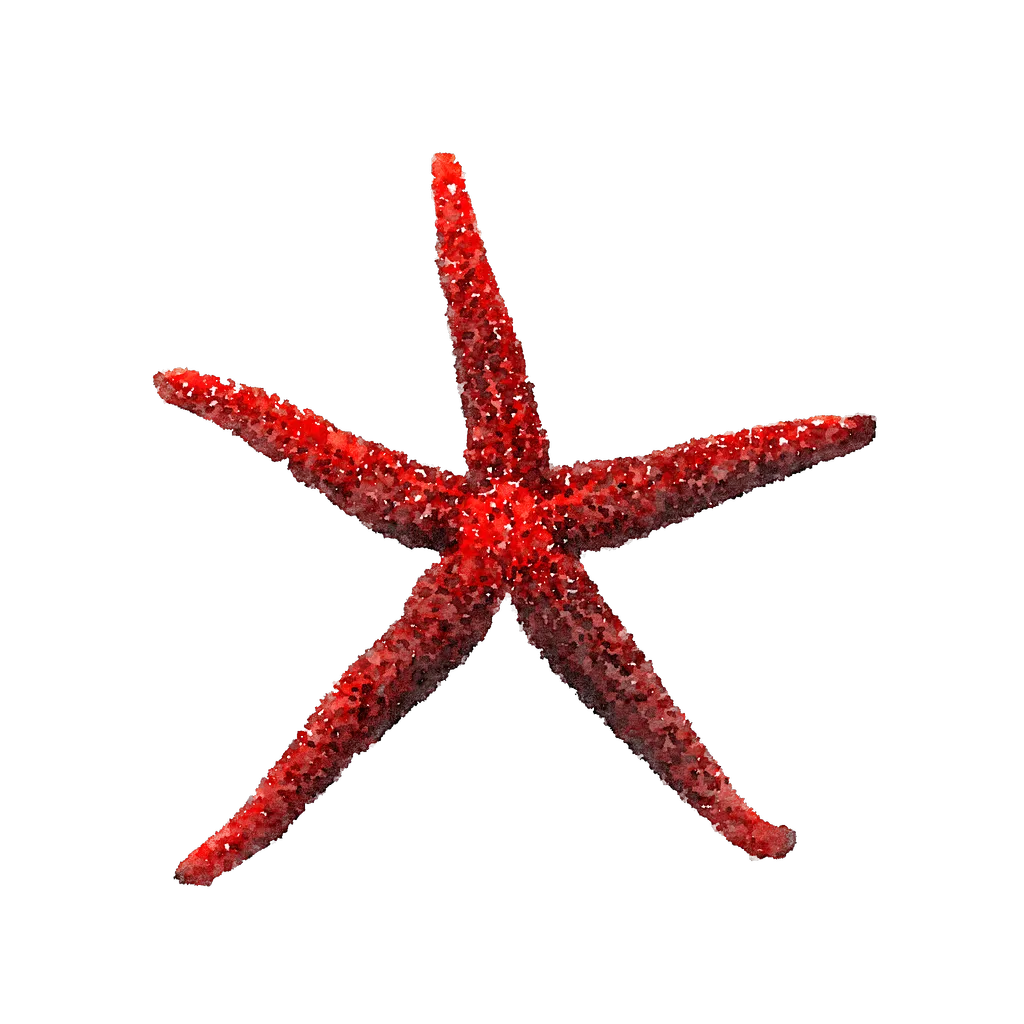
Echinaster sepositus
Red starfish
The Echinaster sepositus, commonly known as the Mediterranean red sea star, is a fascinating marine species found in the Mediterranean Sea. Characterized by its vibrant red or orange hues, this sea star boasts a distinct pentagonal shape with five arms radiating from a central disk. Adults typically measure between 10 to 20 centimeters in diameter, making them of moderate size within the sea star family.
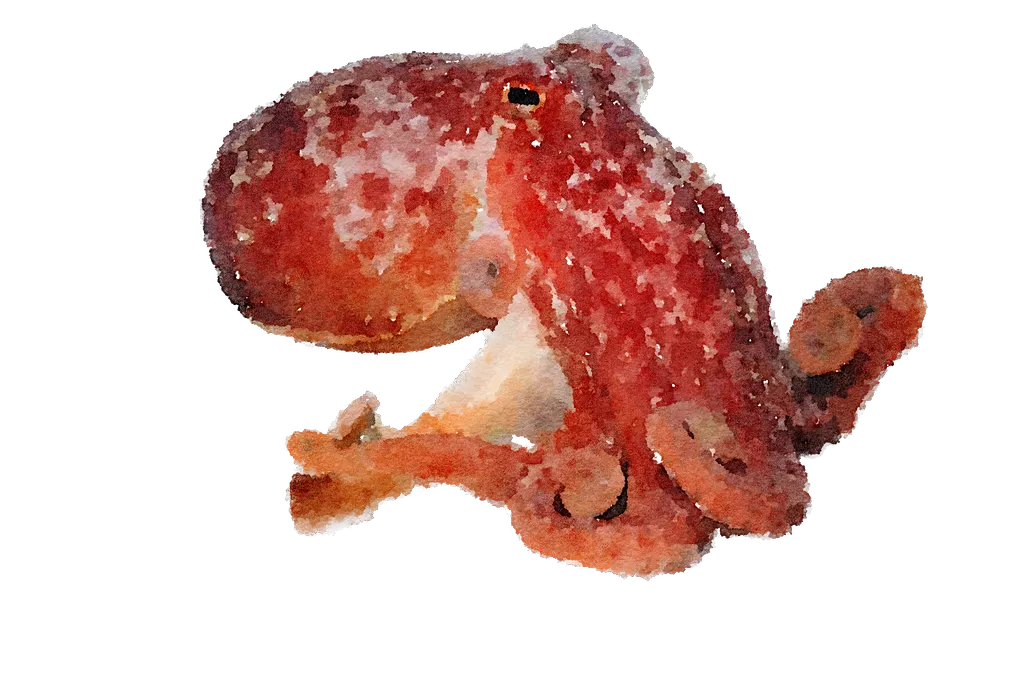
Octopus vulgaris
Common octopus
The Octopus vulgaris, commonly known as the common octopus, is a highly intelligent and adaptable cephalopod inhabiting oceans worldwide. With a fascinating appearance characterized by a bulbous head, large eyes, and eight flexible arms lined with suckers, it showcases remarkable dexterity. Typically ranging from 30 to 90 centimeters in size, the Octopus vulgaris is a master of camouflage, capable of changing both color and texture to blend seamlessly with its surroundings. As a skilled predator, it employs its problem-solving abilities and keen senses for hunting.
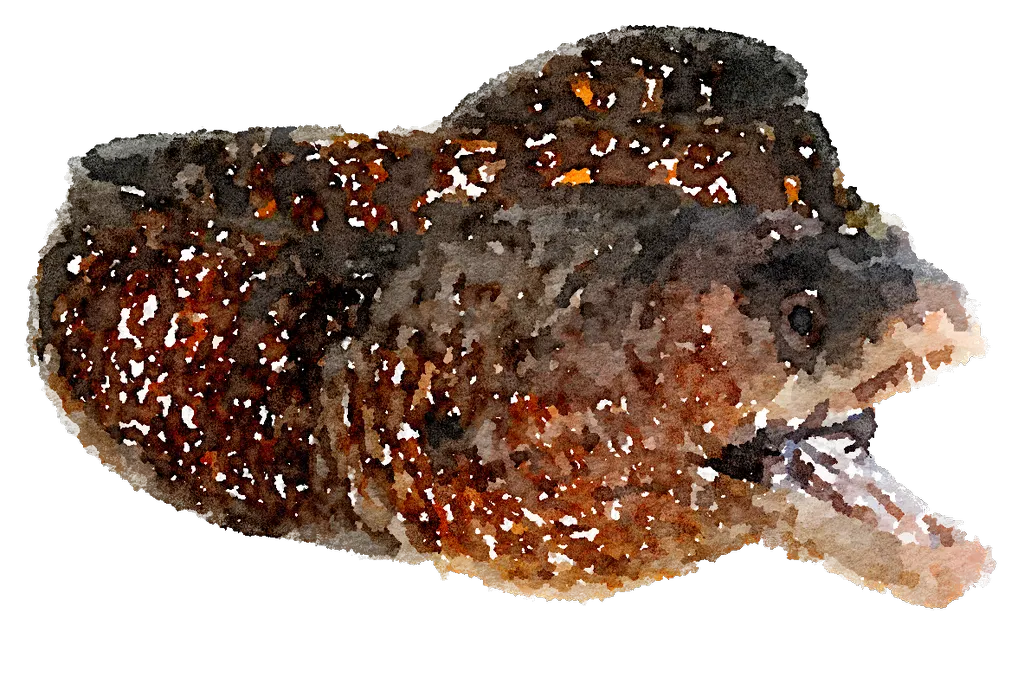
Muraena helena
Moray eel
The Muraena helena, commonly known as the moray eel, is a sleek and sinuous marine creature found in the Mediterranean Sea. With a distinctive appearance characterized by a long, slender body and a gaping jaw filled with sharp teeth, it navigates coastal waters and rocky crevices with ease. Typically measuring between 60 to 80 centimeters in length, this moray eel is known for its nocturnal habits, emerging from hiding spots to hunt for small fish and crustaceans.
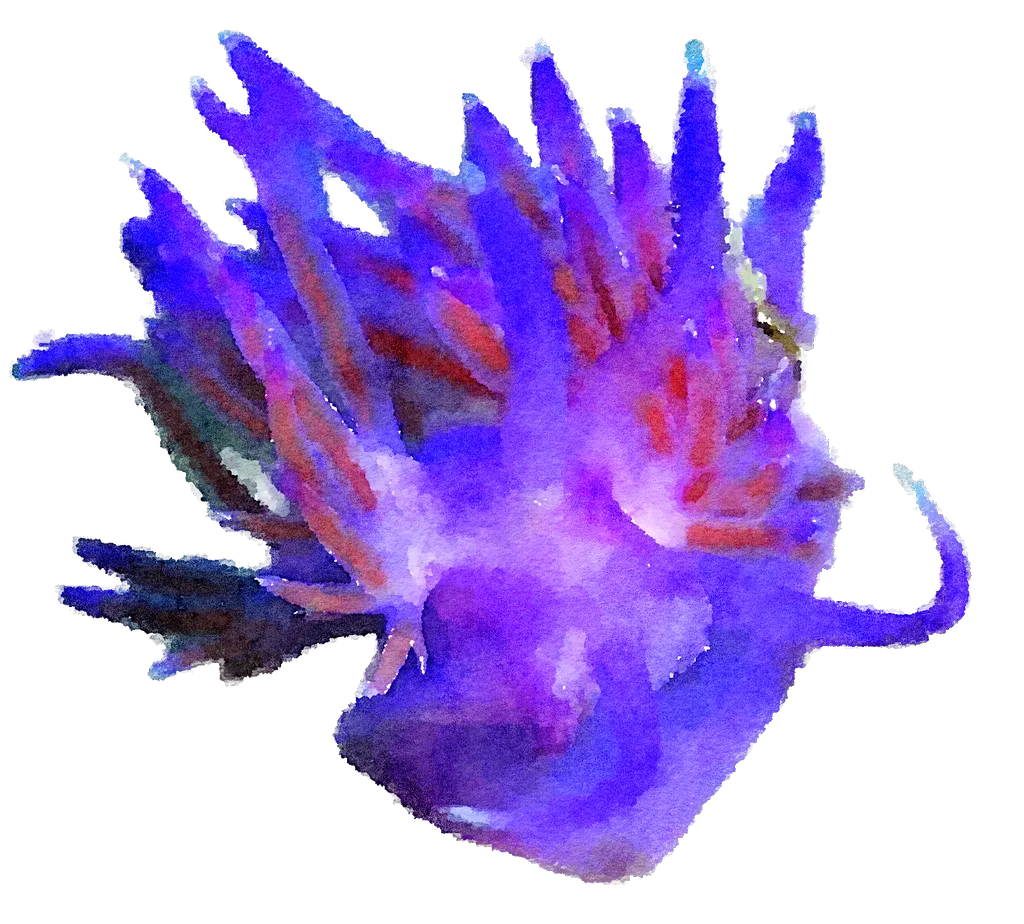
Flabellina affinis
Mediterranean Violet Aeolid
The Flabellina affinis, a colourfull sea slug, graces oceans with its vibrant beauty. With a slender, translucent body adorned with cerata, or finger-like projections, it showcases stunning hues of purple and orange. Typically measuring around 3 centimeters in length, this diminutive creature navigates coastal waters with grace. Known for its preference for hydroids as a food source, Flabellina affinis is a marine invertebrate appreciated for its delicate appearance and its role in maintaining ecological balance in underwater ecosystems.
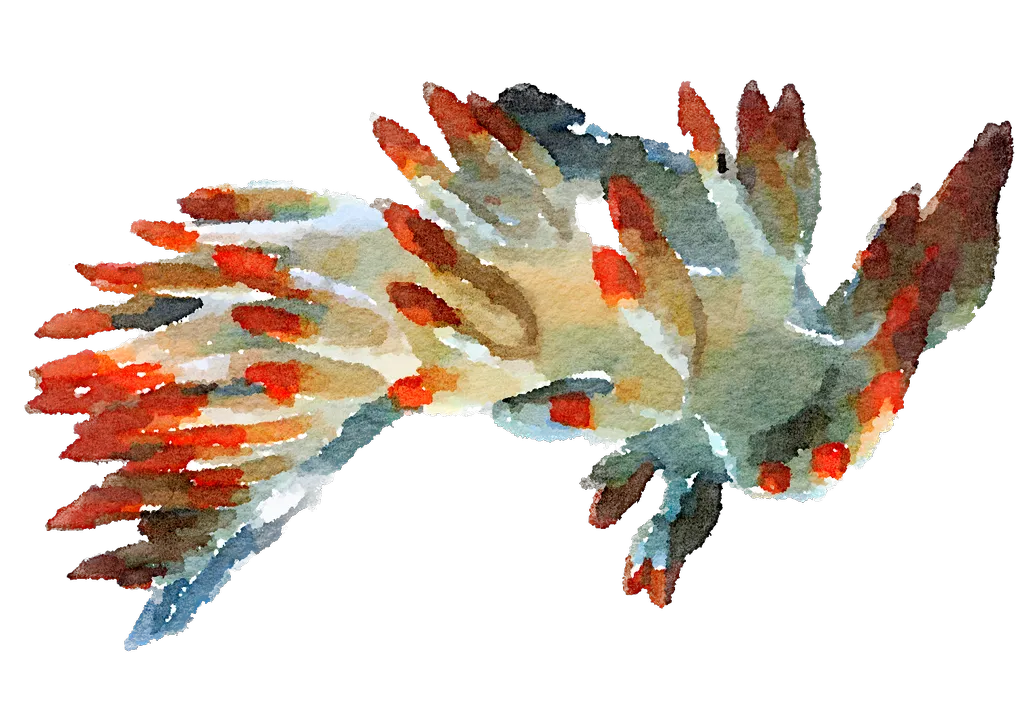
Cratena peregrina
White nudibranch
The Cratena peregrina, a charming sea slug, enchants with its graceful presence in coastal waters. Measuring around 2 to 3 centimeters in length, it boasts a petite yet intricately detailed body. Adorned with cerata and vibrant coloration, often in shades of blue and pink, this sea slug navigates the ocean depths with elegance. Feeding on hydroids, it contributes to the balance of marine ecosystems. The Cratena peregrina’s small size and ornate appearance make it a subject of interest for marine enthusiasts and researchers exploring the diverse and visually stunning world beneath the waves.
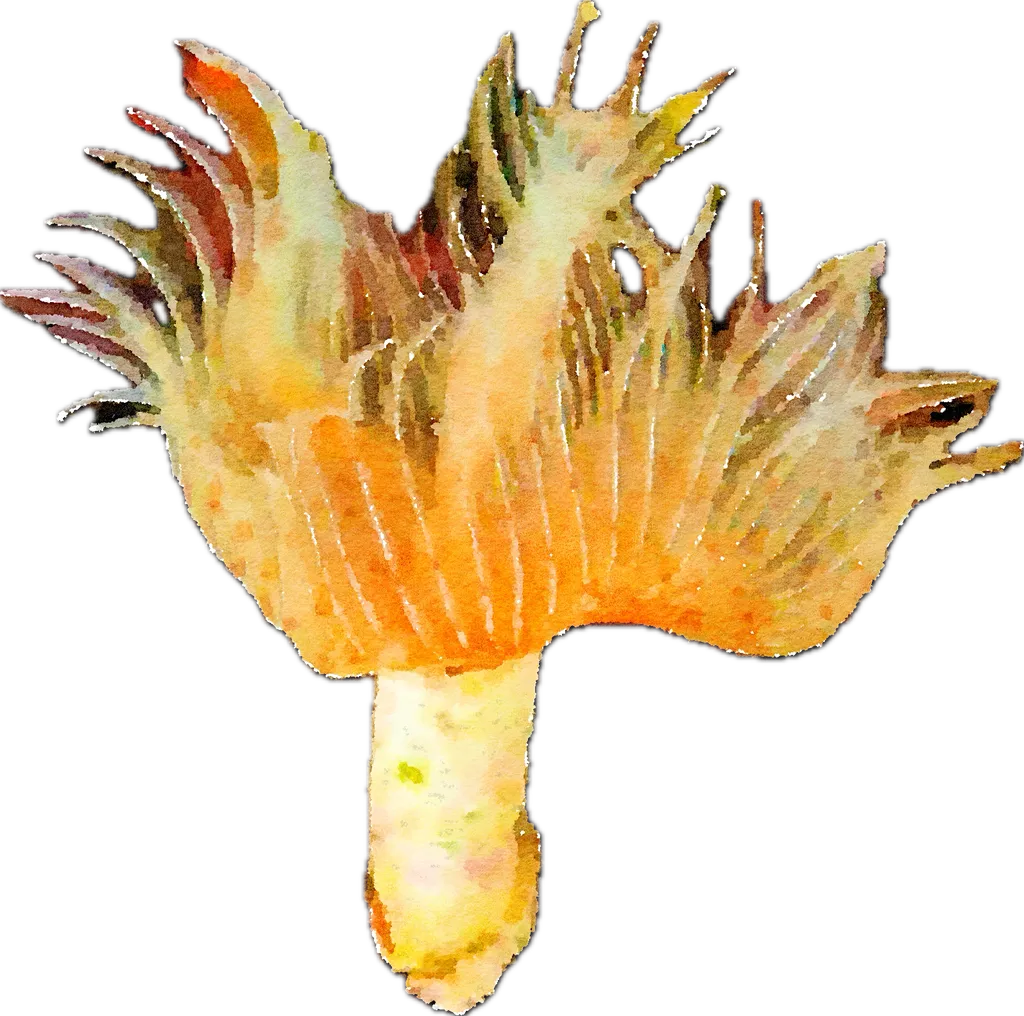
Protula tubularia
White lime tube worm/Fan worm
European fan worms grow to a total length of 9 to 40 cm, and they are filter feeders, primarily feeding on plankton and organic particles suspended in the water column.T hey have stiff, sandy tubes formed from hardened mucus secreted by the worm which protrude from the sand, and a two-layered crown of feeding tentacles which can be retracted into the tube. One of the layers forms a distinct spiral. The colour of the tentacles is variable but they are usually banded in orange, purple and white or they may be a uniform pale grey. Various epiphytic organisms settle and grow on the tubes which may be rather wrinkled near their bases. Found in nutrient-rich waters in sheltered locations where there are no strong currents and little wave action. It grows on soft sediments or anchors itself to rocks.

Paracentrotus lividus
Purple sea urchin
Paracentrotus lividus has a circular, flattened greenish body, up to seven centimetres. with long and sharply pointed spines that are usually purple but are occasionally other colours including dark brown, light brown and olive green. Its gonads are considered a delicacy. Usually found just below low water mark at depths down to twenty metres. Eats a range of red, green and brown algae in addition to seagrass.
Non-Endemic Species
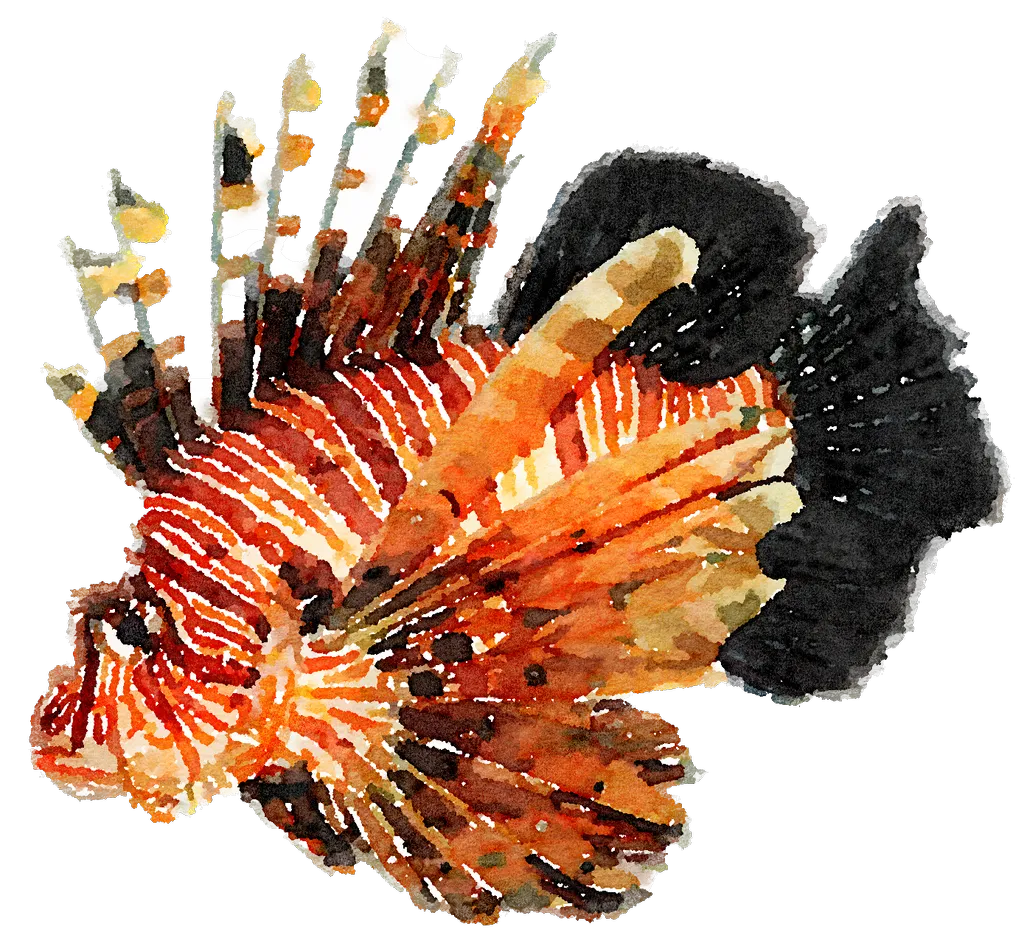
Pterois miles
Lionfish
The Pterois miles, commonly known as lionfish, is an invasive species causing concern in the Mediterranean Sea. Originally native to the Indo-Pacific, its introduction poses a threat to local marine ecosystems. With a size ranging from 25 to 35 centimeters, these striking fish display flamboyant red and white stripes, adorned with venomous spines. Their voracious appetite and lack of natural predators in the Mediterranean contribute to the disruption of native species, potentially leading to a decline in biodiversity. The Pterois miles’ invasive nature is a significant ecological challenge, as it competes for resources and disrupts the delicate balance of the Mediterranean marine environment, underscoring the importance of addressing and managing invasive species to preserve the region’s ecological integrity.

Diadema setosum
Long-spined urchin
The Diadema setosum, commonly known as the long-spined sea urchin, is an invasive species in the Mediterranean Sea. Originating from the Indo-Pacific region, this sea urchin possesses long, venomous spines and can grow up to 30 centimeters in diameter. Diadema setosum feeds on algae, and as with any invasive species is considered a threat to native biodiversity. The proliferation of Diadema setosum in the Mediterranean emphasizes the critical need for effective management strategies to mitigate its ecological impact and safeguard the health and diversity of the region’s marine ecosystems.
